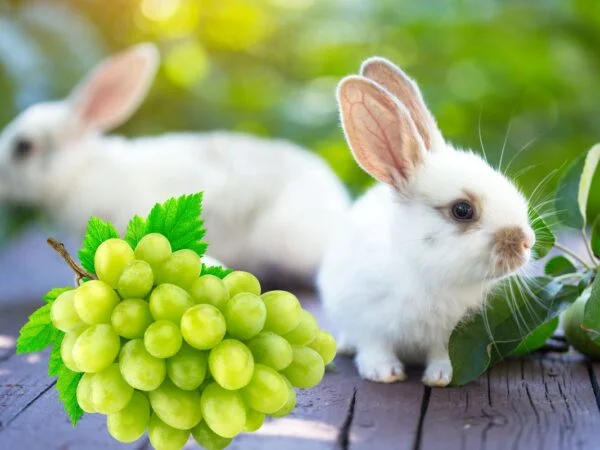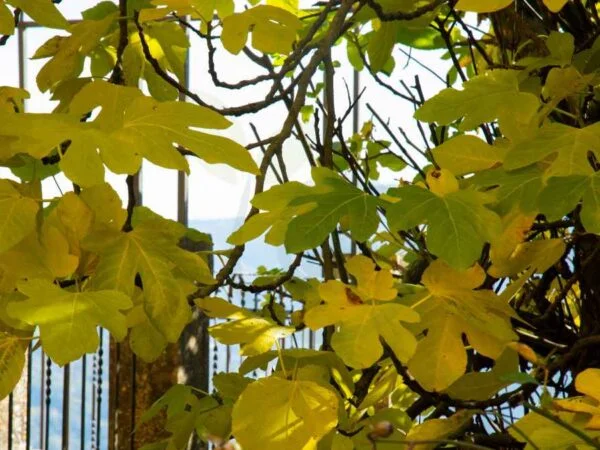Did you know that a single hybrid poplar tree can absorb up to 48 pounds of carbon dioxide each year? Not only are these trees eco-friendly powerhouses, but they also offer a lucrative investment opportunity. By learning how to plant hybrid poplar trees, you can contribute to the environment while reaping financial rewards in the long run.
Whether you're an environmental enthusiast or a savvy investor looking for sustainable options, planting hybrid poplar trees could be your next big move. Join us as we uncover the secrets behind these remarkable trees, species, and water and discover how they can positively impact both your surroundings and your pocket.
Key Takeaways
- Properly understanding hybrid poplar trees is crucial before planting them to ensure their successful growth.
- Consider pre-planting factors such as soil quality, location, and spacing to create an optimal environment for your hybrid poplar trees.
- Follow a detailed step-by-step planting guide to plant hybrid poplar trees correctly and promote healthy root development.
- Provide post-planting care by watering, mulching, and monitoring the trees regularly to support their growth and establishment.
- Protect your hybrid poplar trees from pests, diseases, and harsh weather conditions to maintain their health and vitality.
- Recognize the advantages of hybrid poplar trees like fast growth and wood production but also be aware of potential disadvantages such as susceptibility to certain pests or diseases.
Understanding Hybrid Poplars
Fast Growth
Hybrid poplar trees are renowned for their rapid growth rate, reaching up to 8 feet per year. This quick growth makes them an excellent choice for those seeking immediate results in landscaping or energy production. Their ability to grow swiftly allows for a faster establishment of greenery and biomass.
These trees' fast growth is advantageous when looking to create windbreaks, privacy screens, or decorative features on a property. The rapid development of hybrid poplars can contribute significantly to carbon sequestration and overall environmental improvement through increased tree coverage per year.
Biomass Production
Hybrid poplar trees excel in biomass production due to their high yield of woody biomass. This characteristic makes them valuable resources for generating energy sustainably. By planting superior hybrid poplars, individuals can actively participate in promoting bioenergy solutions that reduce reliance on fossil fuels and mitigate climate change impacts.
The abundance of woody biomass from hybrid poplar trees opens up opportunities for utilizing this renewable resource in various industries such as biofuel production, paper manufacturing, and even sustainable construction materials like particleboard.
Pre-Planting Considerations
Growing Conditions
Hybrid poplar trees are incredibly adaptable to various soil types. They flourish in well-drained, moist soils but can also thrive in sandy or clayey soil conditions. Their versatility allows them to grow successfully in different environments, making them an excellent choice for a wide range of landscapes.
Hybrid poplars require full sun exposure for optimal growth. A minimum of 6 hours of direct sunlight daily is necessary for these trees to reach their maximum potential. Planting them in sunny areas will ensure they receive the required sunlight to flourish and develop robustly.
In terms of hardiness zones, hybrid poplar trees exhibit remarkable adaptability across different climates and regions. Whether facing cold winters or hot summers, these trees can withstand a variety of temperatures. Before planting, it is essential to check the specific hardiness zone recommendations for your area to ensure the successful growth and development of hybrid poplars.
Propagation Methods
One common method used for propagating hybrid poplar trees is through cuttings from mature plants. By taking cuttings from established trees and rooting them properly, new plants can be easily created using this technique. It offers a straightforward and efficient way to propagate hybrid poplars while ensuring genetic consistency among the new plants.
Propagation via cuttings enables gardeners and arborists alike to expand their collection of hybrid poplar trees without much hassle or complexity. This method provides a reliable way to create multiple new plants that retain the desirable traits found in mature hybrids.
Step-by-Step Planting Guide
Site Selection
When planting hybrid poplar trees, the first step is selecting an appropriate site. Ensure the area has enough space for the tree's mature size. Consider factors like nearby buildings, power lines, and other trees that could obstruct growth. Choose a location with adequate sunlight exposure and good drainage to support healthy development.
To prepare for planting, dig a hole that is both wide and deep enough to accommodate the root ball of the hybrid poplar tree. Loosen the soil around the hole to encourage proper root growth. Before planting, make sure to clear any weeds or grass from the area where you plan to plant your tree.
Hole Preparation
Hybrid poplar trees require proper hole preparation for successful growth. After digging an appropriately sized hole, place your tree in its center carefully. Backfill the hole with soil while ensuring that you plant it at the same depth as it was in its nursery container. Once planted, firmly tamp down the soil around the base of your newly transplanted tree.
For initial care after planting hybrid poplar trees, water them thoroughly right after transplanting to help establish their roots effectively. Apply a layer of mulch around their base not only retains moisture but also helps suppress weed growth in their vicinity. Keep a close eye on your newly planted hybrid poplars during their early stages for any signs of stress or disease.
Post-Planting Care
Watering Tips
Hybrid poplar trees need frequent watering, especially in dry spells. Deep watering is crucial to encourage robust root development. However, be cautious not to overwater as it can cause root rot and other complications.
To ensure your hybrid poplars thrive, consider a consistent watering schedule during dry periods. For example, providing a good soak every few days rather than light daily sprinklings can help the roots grow deeply into the ground for better stability and nutrient absorption.
Fertilizing Schedule
Regular fertilization is key to promoting healthy growth in hybrid poplar trees throughout their active growing season. Opt for a balanced tree-specific fertilizer to provide essential nutrients adequately. Following the recommended fertilizing schedule will support optimal growth and overall tree health.
When applying fertilizer, remember that timing matters. Providing nutrients at the right time ensures that the trees receive what they need when they need it most for vigorous growth and resilience against diseases or pests.
Pruning Techniques
Pruning your hybrid poplar trees during their dormant season - typically late winter or early spring - helps maintain their shape and health. Remove any dead, damaged, or crossing branches to enhance air circulation within the canopy.
Protecting Your Trees
Hybrid poplar trees have deer-resistant qualities due to their strong scent and bitter taste, but young trees can still be at risk of deer browsing. To safeguard your young hybrid poplars, consider using fencing or repellents if deer are known to frequent the area. By taking these precautions, you can help prevent damage to your trees and promote healthy growth.
In addition to potential deer threats, common pests like aphids and caterpillars can also pose a risk to hybrid poplar trees. Regularly checking your trees for any signs of infestation is crucial in maintaining their health. If you notice pest-related issues, it's essential to address them promptly using suitable insecticides or organic methods. This proactive approach will protect your trees from pest damage and ensure their overall well-being.
Advantages and Disadvantages
Economic Benefits
Hybrid poplar cultivation can bring economic gains to landowners due to their rapid growth and high biomass yield. This makes them a lucrative option for bioenergy production, offering opportunities for generating income by selling hybrid poplar timber. By leveraging these economic benefits, landowners can capitalize on the profitability of hybrid poplar trees.
One should conduct a thorough profitability analysis before planting hybrid poplar trees. Factors such as initial investment, maintenance costs, and potential revenue streams need careful consideration. It's crucial to assess the market demand for hybrid poplar products in your region to ensure the financial viability of cultivating these trees.
Profitability Analysis
Hybrid poplar trees present various advantages including swift growth, phytoremediation benefits, and abundant biomass production capabilities. Their adaptability to diverse soil types and hardiness zones make them versatile options for different landscapes. Planting hybrid poplars not only enhances the visual appeal but also provides both environmental and economic advantages.
Despite their numerous benefits, it's essential to acknowledge that hybrid poplar trees come with certain drawbacks too. Regular upkeep like pruning and fertilizing is necessary for maintaining these trees' health. Without proper management practices in place, there is a risk of invasive spread which could potentially offset some of the positive aspects associated with growing hybrid poplars.
Cropping Techniques
Biomass Harvesting
Hybrid poplar trees are usually harvested for their biomass after 3 to 5 years of growth. The process involves cutting down the trees and chipping them into smaller pieces. These wood chips can then be used for energy production or other purposes, such as making paper products or biofuels. Proper harvesting techniques are essential to ensure maximum biomass yield and sustainability, allowing for continuous growth and utilization of these valuable resources.
One significant advantage of hybrid poplar trees is their fast growth rate, enabling quicker harvesting cycles compared to traditional hardwoods. This rapid turnover makes them a highly efficient source of biomass material for various industries. By utilizing hybrid poplar biomass, companies can reduce reliance on fossil fuels and contribute to more sustainable practices in energy production.
Wood Utilization
The wood derived from hybrid poplar trees offers diverse applications across different sectors due to its unique properties. Hybrid poplar wood is lightweight yet remarkably strong, making it an ideal choice for construction projects where both durability and flexibility are crucial factors. Industries utilize hybrid poplar lumber in building homes, furniture manufacturing, and crafting composite materials that require a balance between strength and weight.
Moreover, hybrid poplar trees provide a renewable source of wood that supports environmentally friendly practices within the forestry sector by promoting responsible land management strategies. By incorporating hybrid poplars into various industries like construction or pulpwood production, businesses can benefit from sustainable sourcing while reducing their environmental impact.
Sustainability and Environment
Eco-Friendly Wood Production
Growing hybrid poplar trees for wood production is a sustainable practice. These trees play a crucial role in the environment by sequestering carbon dioxide, which helps combat climate change. By opting for hybrid poplar wood, the demand for non-renewable resources decreases significantly.
Hybrid poplar trees are considered excellent carbon sinks because they can absorb substantial amounts of carbon dioxide from the atmosphere. This ability makes them valuable contributors to carbon offset initiatives aimed at reducing greenhouse gas emissions. The long-term storage of carbon within their biomass aids in combating climate change by effectively trapping and storing harmful greenhouse gases.
Carbon Sequestration
Planting hybrid poplar trees not only contributes to sustainable wood production but also plays a vital role in environmental conservation efforts. These trees actively sequester large quantities of carbon dioxide, aiding in maintaining a healthy atmospheric balance. As part of nature's intricate system, hybrid poplars help mitigate climate change by absorbing excess CO2 and storing it within their structure.
In essence, cultivating hybrid poplar trees serves as an impactful strategy for individuals and organizations looking to reduce their carbon footprint while supporting eco-friendly practices that benefit the environment on a broader scale.
You've now grasped the essence of planting hybrid poplar trees, from understanding their nature to caring for them post-planting. Remember, successful tree planting not only benefits your surroundings but also contributes to a greener environment. So, go ahead and put your newfound knowledge into action. Get those hybrid poplars in the ground and watch them grow, knowing you're making a positive impact on the world around you.
Frequently Asked Questions
How do hybrid poplar trees differ from traditional tree species?
Hybrid poplar trees are a crossbreed of different poplar varieties, combining the best traits for rapid growth and disease resistance. Unlike traditional trees, they offer faster growth rates and can thrive in various soil conditions.
What factors should I consider before planting hybrid poplar trees?
Before planting hybrid poplars, consider factors like soil quality, sunlight exposure, spacing requirements, and potential pest issues. Ensuring proper irrigation systems and space availability are crucial for their successful growth.
Can I plant hybrid poplar trees in any climate?
Hybrid poplars generally prefer temperate climates with well-drained soils. While they can adapt to various environments, extreme weather conditions may hinder their growth. It's essential to research the specific climate requirements of the particular hybrid variety you intend to plant.
How deep should I plant hybrid poplar tree saplings?
When planting hybrid poplar saplings, dig a hole that is twice as wide but just as deep as the root ball. Placing the tree too deep or too shallow can affect its stability and nutrient absorption. Ensure that the root flare sits slightly above ground level after backfilling.
Are there any special care tips needed after planting hybrid poplar trees?
After planting your hybrid poplars, ensure adequate watering during dry spells to establish strong root systems. Mulching around the base helps retain moisture and suppresses weed growth. Regularly monitor for signs of pests or diseases to address them promptly.
Image Source: Paid image from CANVA





